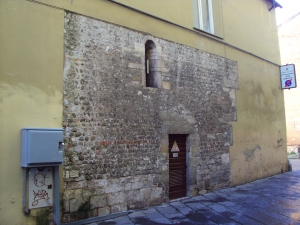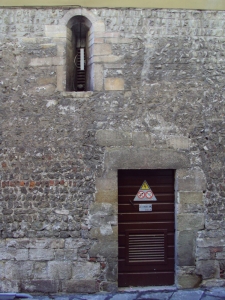
Information
Foundation:
VIII secolo
District/Location:
Lucca
District:
Piana di Lucca


In the area between the cathedral and the present Via Santa Croce, whose layout follows that of the Roman decuman, numerous religious institutions arose in the Middle Ages: among them the church of San Donnino, today deconsecrated and incorporated in other buildings but particularly significant for the presence of wall remains from the early Middle Ages.
Via San Donnino, Lucca
Of the ancient church of San Donnino, mentioned for the first time in 790 among the appurtenances of the Cathedral of San Martino and whose history ends in 1808 with the Napoleonic suppressions, there remains only a shred of wall, a portal and a single-light window: the the rest of the building has been incorporated since the second half of the 19th century into later buildings, today privately owned. However, within these are still visible remains of decoration with geometric motifs dating from the 13th and 14th centuries. A venerated fresco depicting the Mother of God was located on the right wall of the church and led to the establishment of the Confraternity of the Madonna del Bell’Amore. The painted Cross by Berlinghiero Berlinghieri also comes from this church and is kept in the Museum of Palazzo Venezia in Rome. What remains of the external wall structure, visible in a portion of the south side overlooking the homonymous street and spared from the plaster, is of extraordinary value in the landscape of early medieval architecture of Lucca: it is in fact one of the few examples of masonry from the Carolingian period preserved in the city, characterized by the use of square verrucano drafts for the basement and rows of inhomogeneous material arranged in a herringbone pattern in the upper part. Archaeologists of architecture have also identified fragments of Roman bricks in this work, along with other reuse materials. The two openings - a portal and a single-light window - are obtained through the arrangement of squared stone drafts of greater size and more refined workmanship; the arch of the single-light window is monolithic.
Scopri altre attrazioni vicino a Saint Donnino
See allYou may also like..
See allFind more
0













